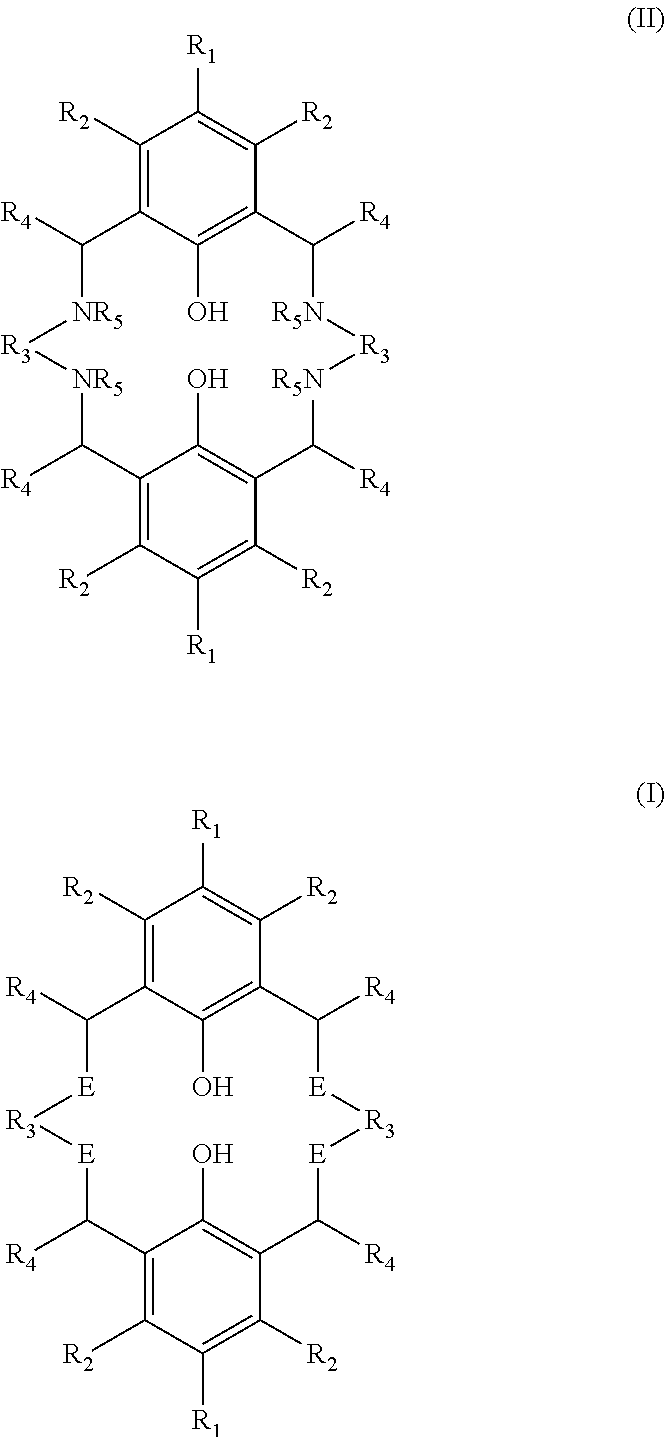Process for the production of tetraaminobiphenol macrocyclic ligands; and novel tetraaminobiphenol macrocyclic ligands
a technology of tetraaminobiphenol and macrocyclic ligands, applied in the field of improvement, can solve the problems of inability to achieve yield, and achieve the effect of high yield and higher yield
- Summary
- Abstract
- Description
- Claims
- Application Information
AI Technical Summary
Benefits of technology
Problems solved by technology
Method used
Image
Examples
example 5
reparation of Tetra-Methylated Ligand 12
[0154]
[0155]Representative example: To a solution of ligand 1 (1.00 g, 1.0 eq) in 2-methyl-tetrahydrofuran (9 mL) and acetone (18 mL) were added dimethylsulfate (0.77 mL, 4.5 eq) and sodium ethanoate (1.04 g, 7.0 eq). Reaction mixture was stirred at room temperature for 18 h. After this time, reaction mixture was filtered and the filter cake was washed with acetonitrile. The filter cake was solubilised in dichloromethane / water, and phases were separated. The aqueous phase was extracted with dichloromethane. The combined organic layers were dried over sodium sulfate, and the solvents were evaporated in vacuo to yield tetra-methylated ligand 12 (35%).
[0156]Examples of other bases used in the preparation of ligand 12:
[0157]Base=sodium hydroxide (NaOH—5.5 eq), solvent=tetrahydrofuran / acetonitrile (1:3), room temperature, 16 hours. Yield=18%.
[0158]Base=disodium phosphate (Na2HPO4— 5.5 eq), solvent=tetrahydrofuran / acetonitrile (1:3), room temperatur...
example 6
on of Tetra-Methylated Ligand 22
[0159]
[0160]To a solution of ligand 21 (1.00 g, 1.0 eq) in methanol (30 mL) were added dimethylsulfate (0.81 mL, 4.5 eq) and sodium carbonate (1.10 g, 5.5 eq). Reaction mixture was stirred at room temperature for 18 h. After this time, reaction mixture was filtered and the mother liquor was evaporated. The residue was solubilised in dichloromethane / water, and phases were separated. The aqueous phase was extracted with dichloromethane. The combined organic layers were washed with a saturated aqueous solution of sodium hydrogen carbonate, and phases were separated. The organic layer was dried over sodium sulfate, and the solvents were evaporated. 22 (60%); MS (ESI) 581.4 [M+H]+
example 7
on of Tetra-Methylated Ligand 24
[0161]
[0162]To a solution of ligand 23 (1.00 g, 1.0 eq) in dimethyl carbonate (30 mL) was added sodium carbonate (1.06 g, 5.0 eq). Reaction mixture was stirred at reflux for 18 h. After this time, reaction mixture was filtered and the mother liquor was evaporated. The residue was solubilised in dichloromethane / water, and phases were separated. The aqueous phase was extracted with dichloromethane. The combined organic layers were washed with a saturated aqueous solution of sodium hydrogen carbonate, and phases were separated. The organic layer was dried over sodium sulfate, and the solvents were evaporated. 24 (45%): MS (ESI) 553.4 [M+H]+
PUM
| Property | Measurement | Unit |
|---|---|---|
| temperature | aaaaa | aaaaa |
| temperature | aaaaa | aaaaa |
| time | aaaaa | aaaaa |
Abstract
Description
Claims
Application Information
 Login to View More
Login to View More - R&D
- Intellectual Property
- Life Sciences
- Materials
- Tech Scout
- Unparalleled Data Quality
- Higher Quality Content
- 60% Fewer Hallucinations
Browse by: Latest US Patents, China's latest patents, Technical Efficacy Thesaurus, Application Domain, Technology Topic, Popular Technical Reports.
© 2025 PatSnap. All rights reserved.Legal|Privacy policy|Modern Slavery Act Transparency Statement|Sitemap|About US| Contact US: help@patsnap.com



